Polyrrhenia was an ancient city in western Crete, strategically positioned on a steep hill south of modern-day Kissamos. Occupied from the Early Iron Age until the Byzantine period, the city’s location offered both defensive advantages and access to fertile plains and the sea.
Defensive Structures
The city’s fortifications were a crucial aspect of its urban development. While the exact extent and nature of the earliest fortifications are unclear, archaeological evidence points to significant defensive structures dating back to the Hellenistic period (4th-1st centuries BC). These were further developed and maintained in the Roman period.
-
Hellenistic Walls: Sections of the Hellenistic walls are still preserved, indicating a substantial construction designed to protect the city. These walls likely included towers and gates, though specific details about their design and construction are limited.
-
Roman Walls: The majority of the remaining city walls date to the Roman period. These walls demonstrate a continued emphasis on defense, even though Polyrrhenia peacefully submitted to Roman rule. The Roman walls likely incorporated and expanded upon the earlier Hellenistic fortifications.
-
Acropolis: The highest point of the hill served as the city’s Acropolis. In the Byzantine period, a castle was constructed on this site, incorporating elements of the earlier fortifications. The Byzantine castle walls, reaching a height of 3.5 meters in some places, provide further evidence of the site’s ongoing strategic importance.
The Acropolis and its Significance
The Acropolis of Polyrrhenia held a prominent position within the city, both physically and symbolically. It served as a fortified stronghold and likely housed important religious and administrative structures.
-
Religious Structures: Archaeological excavations have revealed the remains of an early Christian basilica within the Acropolis, suggesting its continued use as a religious center in the Byzantine period. Additionally, a large building for religious use, possibly a temple or altar dedicated to Artemis, has been excavated near the church of the 99 Holy Fathers, which was built in the late 19th century using ancient building materials.
-
Strategic Importance: The Acropolis, with its commanding view of the surrounding area, would have been crucial for surveillance and defense. Its fortified nature provided a refuge for the city’s inhabitants in times of conflict.
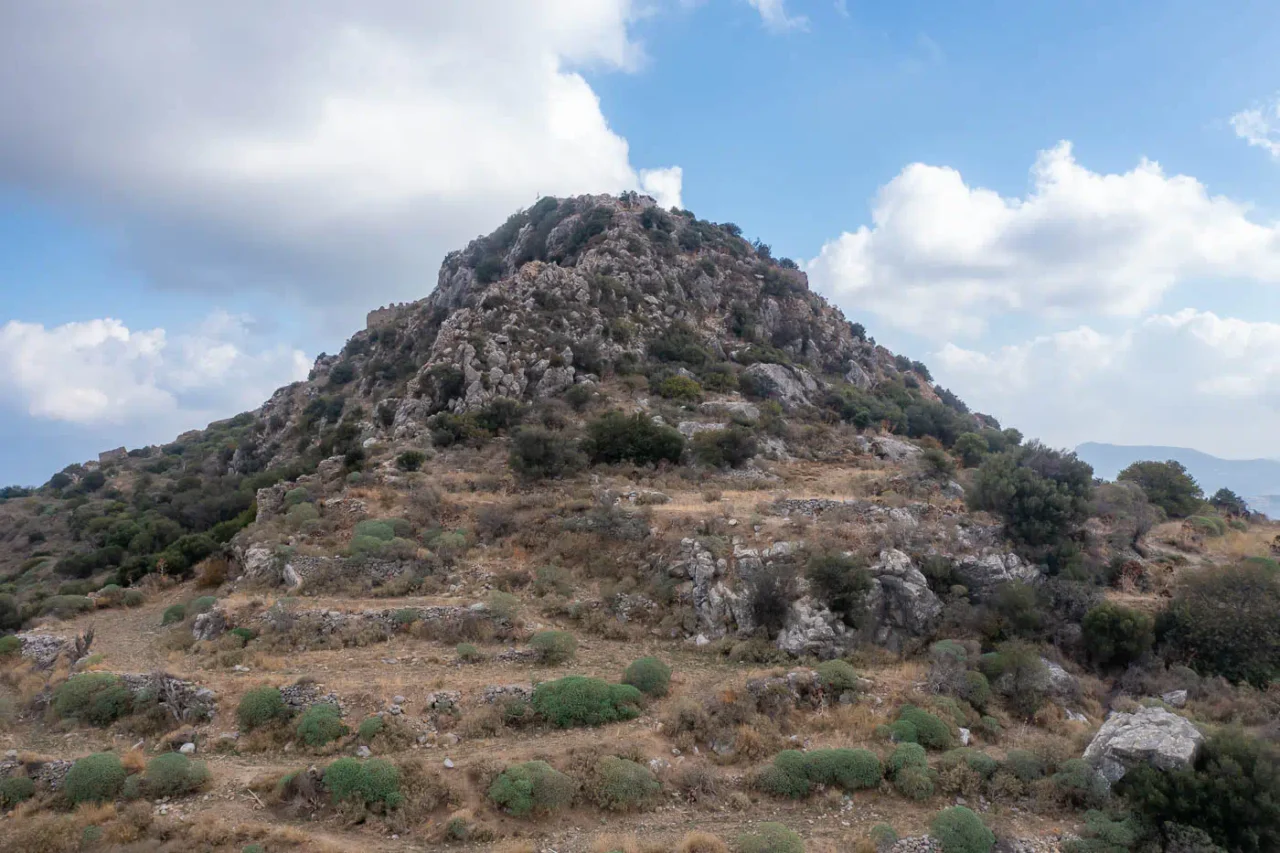
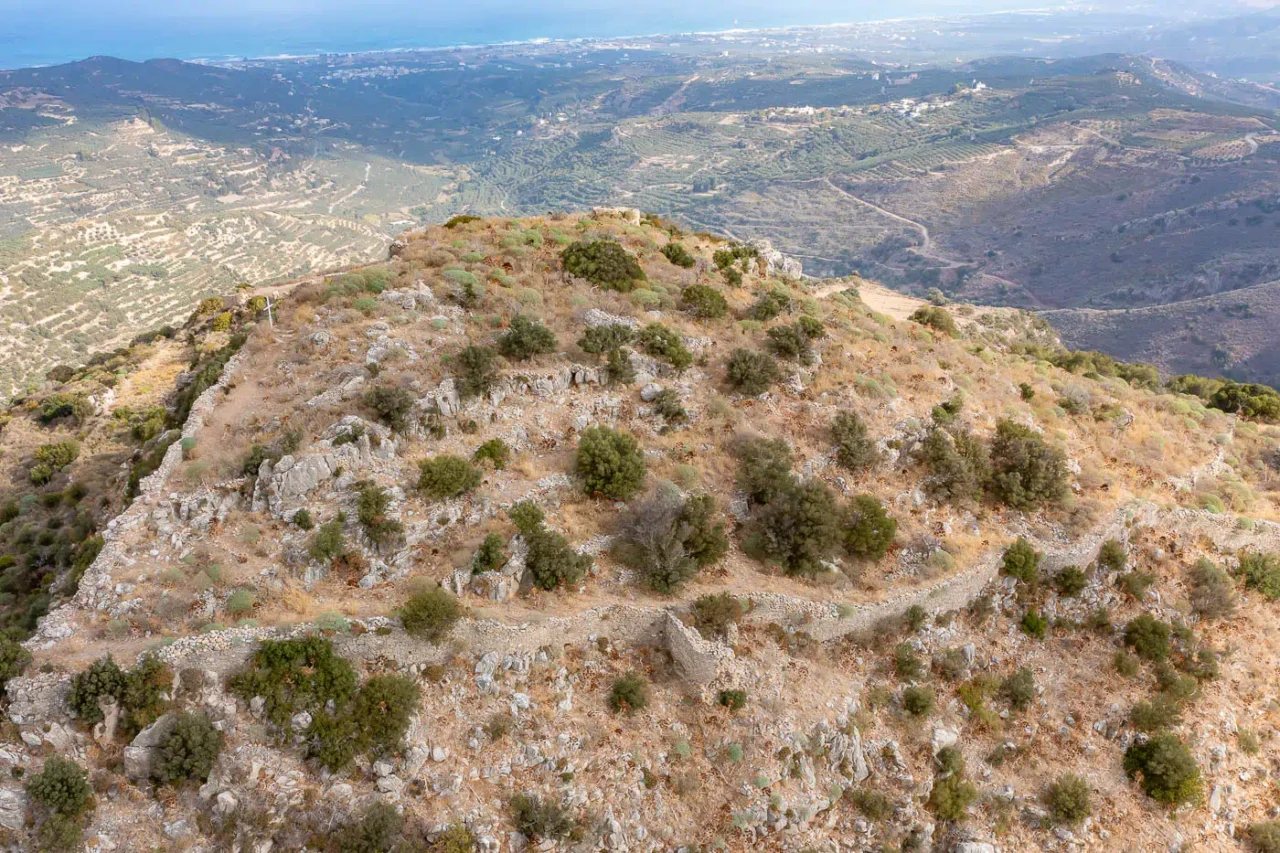
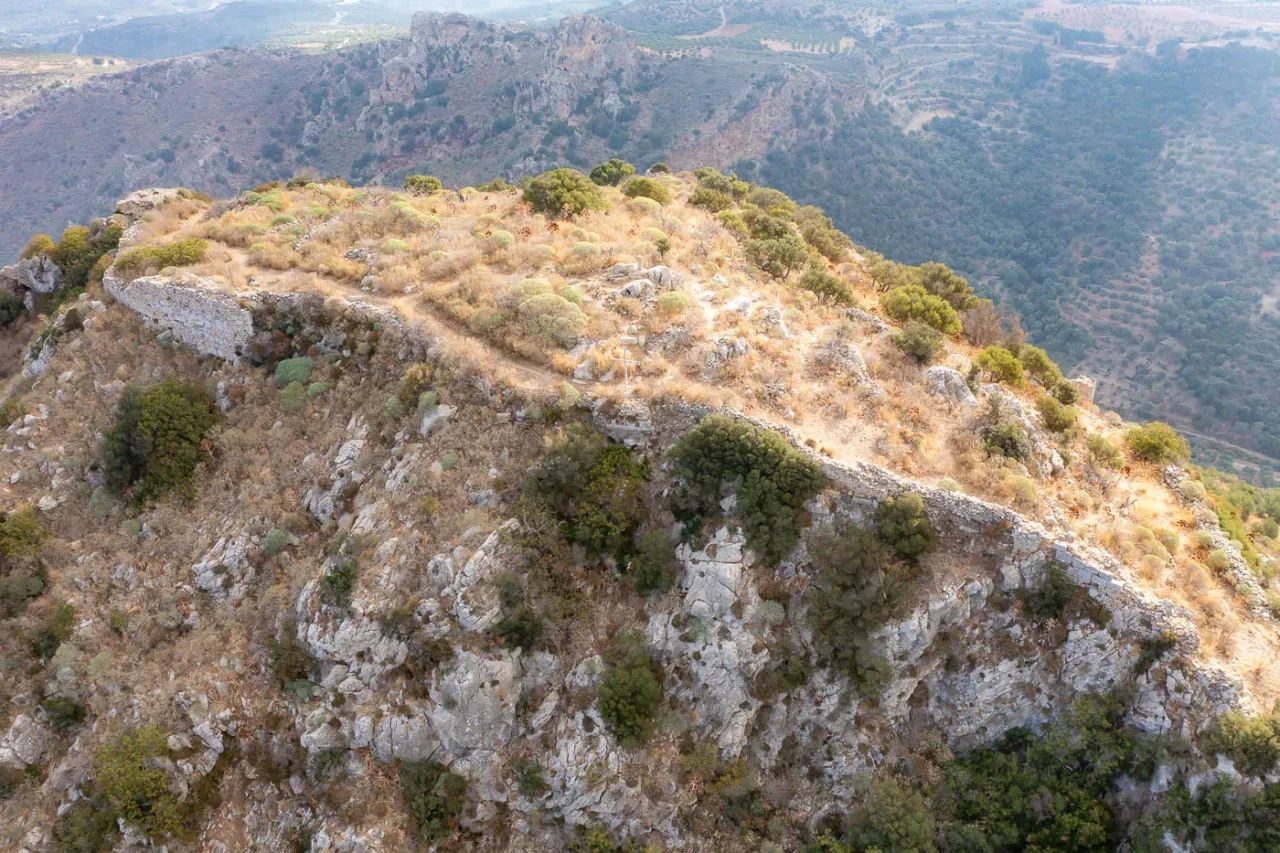
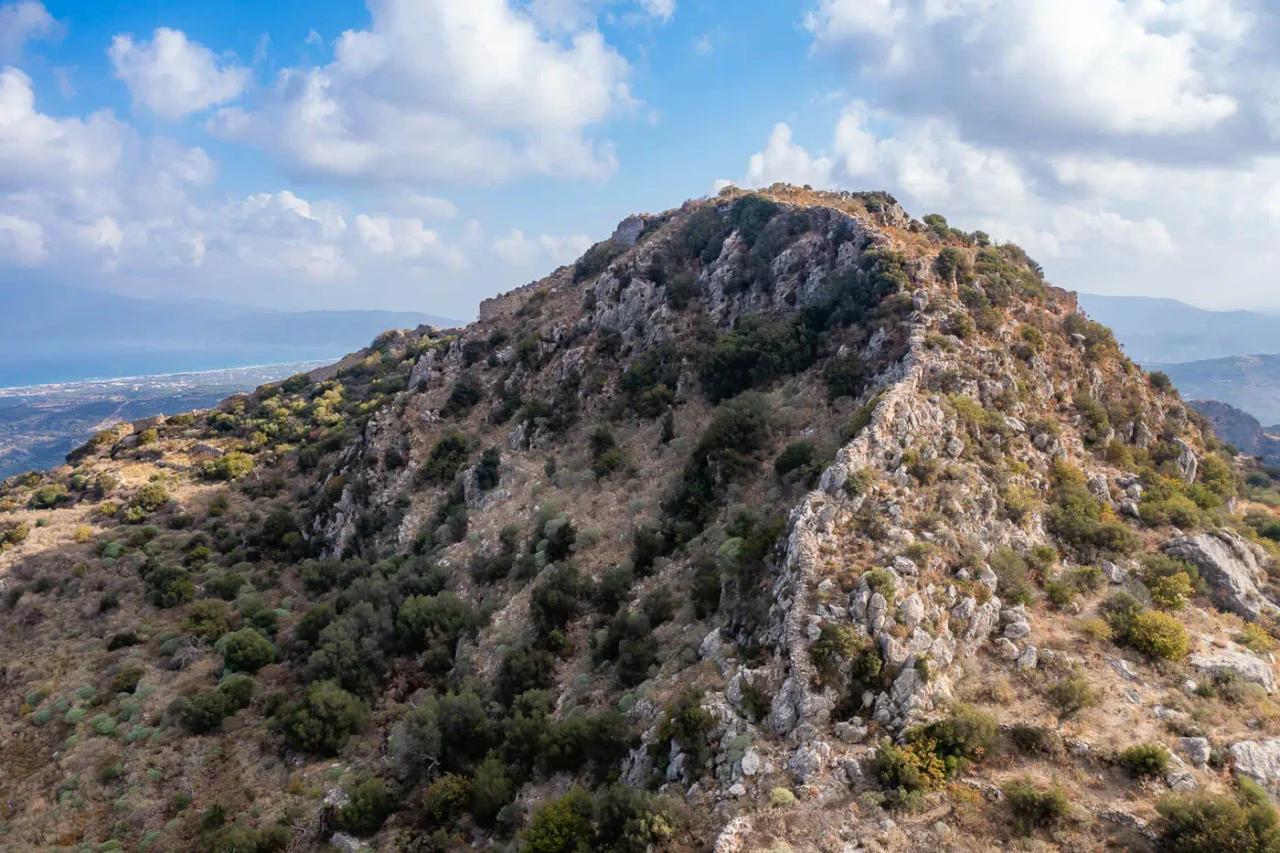
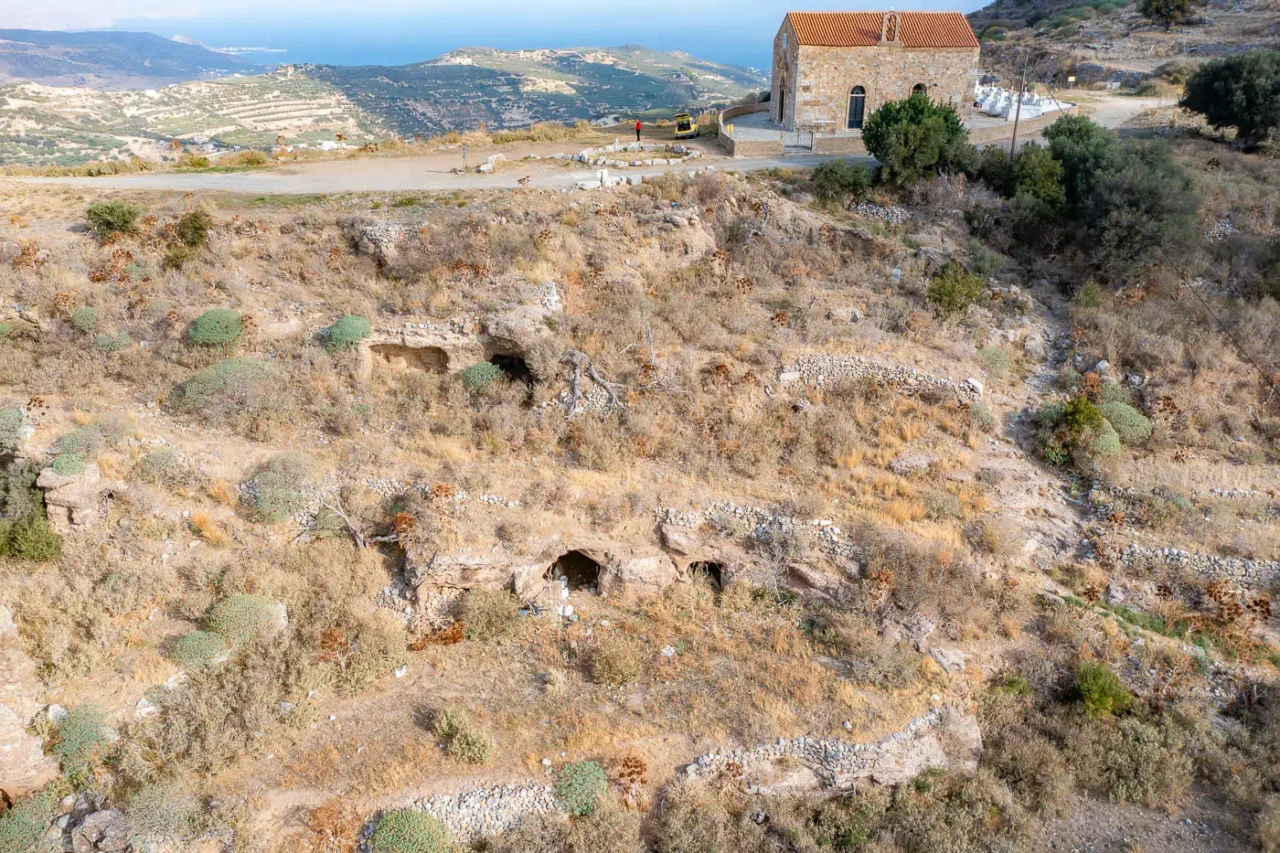
Water Management and Infrastructure
The city’s fortifications were complemented by infrastructure designed to ensure a reliable water supply, vital for sustaining the population and withstanding sieges.
-
Aqueduct: An aqueduct, one of the most visible remnants of the ancient city, supplied water to Polyrrhenia. A semicircular defensive tower, connected to the aqueduct by a pipeline, protected this critical infrastructure. Sections of the aqueduct’s galleries are still visible within the modern village.
-
Reservoirs and Cisterns: Water for the aqueduct was collected from a carved underground reservoir, which was connected to a second reservoir via an open clay pipeline. Scattered carved cisterns throughout the archaeological site and on the Acropolis provided additional water storage capacity.
Later Use and Current Status
While Polyrrhenia declined in the Late Roman and Byzantine periods, its ruins, including the fortifications and Acropolis, remain well-preserved. The site is open to the public, offering visitors a glimpse into the city’s long history. The church of the 99 Holy Fathers, constructed in the late 19th century using ancient building materials, stands as a more recent addition to the site, highlighting the enduring connection between the past and present.
Fortifications: Key Points
- Construction Period: Hellenistic period (4th-1st centuries BC) with later Roman and Byzantine additions
- Location: On a steep hill, approximately 2.5 kilometers south of Kissamos, Crete
- Historical Significance: The fortifications protected the city and its inhabitants, reflecting its strategic importance in western Crete.
- Current Status: The remains of the fortifications, including sections of the Hellenistic and Roman walls and the Byzantine castle on the Acropolis, are well-preserved and open to the public.


There are no comments yet.